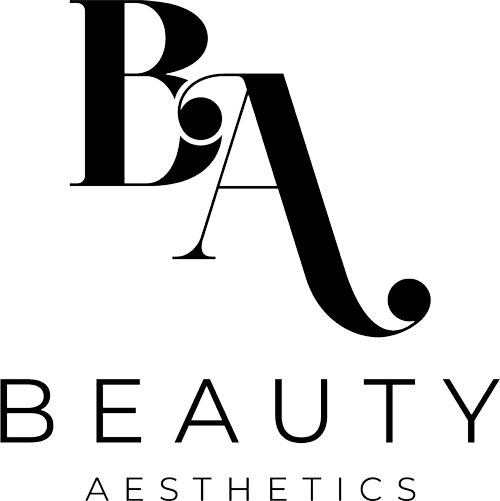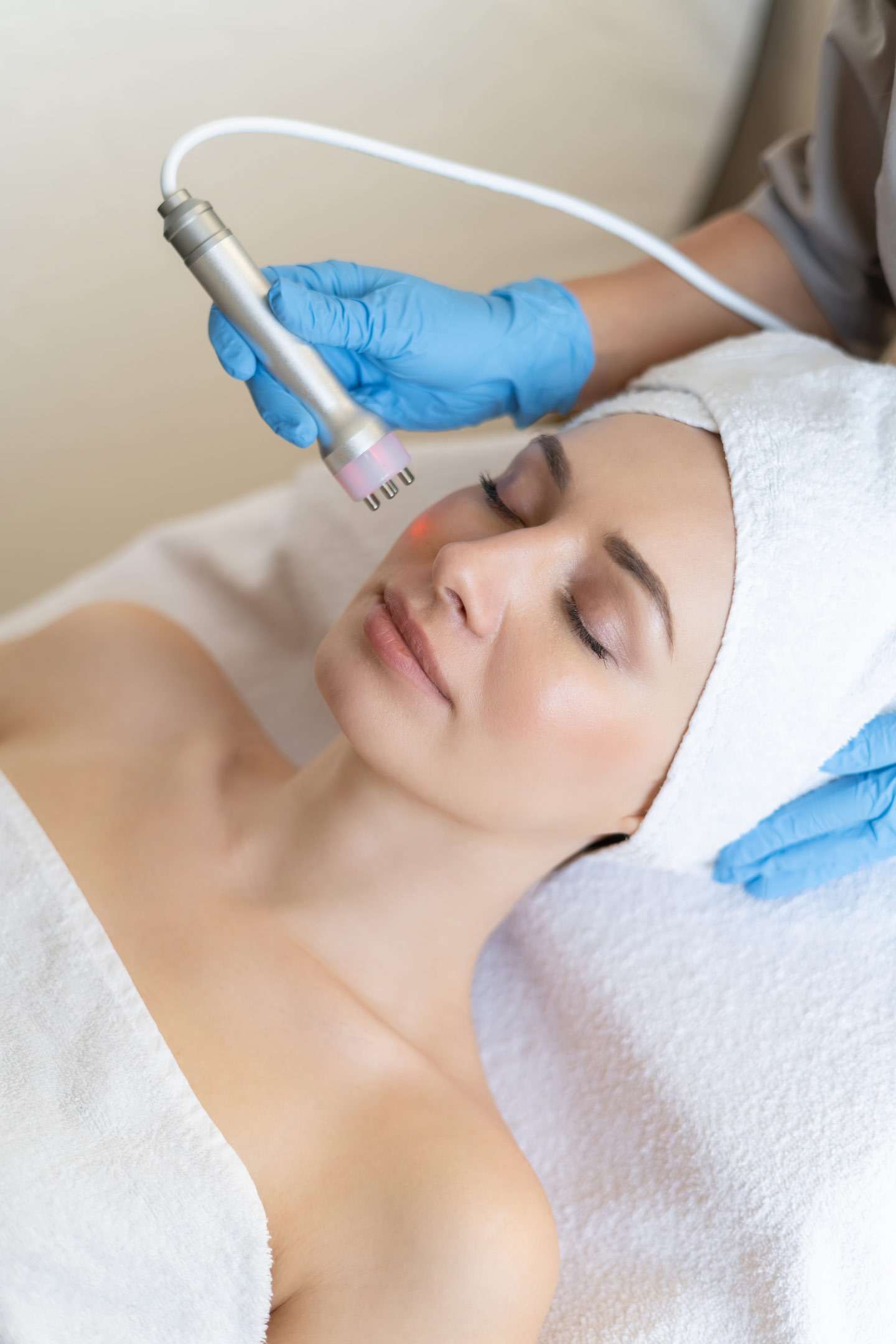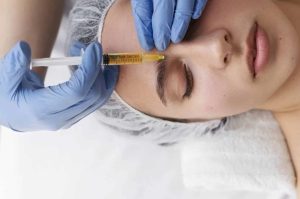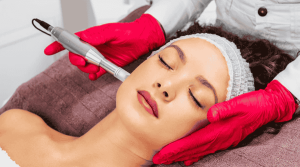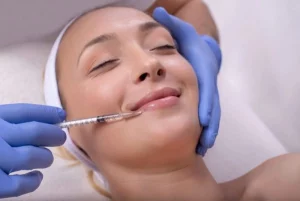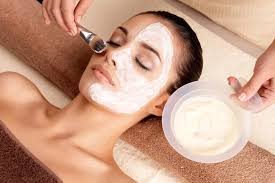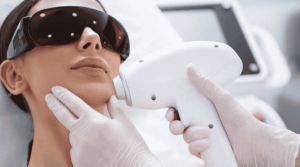Navigating the world of aesthetic treatments can feel overwhelming with so many procedure options for improving skin health and appearance. From microneedling treatments and chemical peels to laser treatments and injectable procedures, understanding the risks, benefits, and recovery times of each approach is essential. Microneedling—also referred to as Percutaneous collagen induction therapy—has quickly gained popularity because of its potential to boost collagen production and elastin deposition, reduce Acne scars, and rejuvenate skin texture. This blog will compare microneedling with other wide range of skin treatments to help you determine the best route toward a youthful appearance.
What is Microneedling?
Microneedling, also called collagen induction therapy, involves using tiny needle tips to create controlled micro – injuries on the layer of skin. The process stimulates the body’s healing process, prompting an increase in collagen and elastin production. Also known as Percutaneous collagen induction therapy, microneedling is considered a safe procedure for many skin types, including darker skin tones. Although the concept of microneedling dates back decades, recent advancements in microneedling devices—like the microneedling pen—have made this cosmetic procedure more accessible and consistent.
Mechanism of Action
During a microneedling session, the needles puncture the stratum corneum (outermost layer of skin) and can reach the deeper layers to a controlled depth, often determined by variable needle lengths or specialized needle cartridge attachments. These micro – channels trigger stimulation for wound healing, inducing collagen and elastin synthesis while improving skin barrier function. Research has shown that this method can enhance transfollicular absorption and delivery of skin care products, boosting the effect of topicals—such as hyaluronic acid, vitamins, and peptides—into the skin tissue.
Common Applications
Microneedling addresses a wide range of skin concerns, including Acne scars, surgical scars, fine lines, enlarged pores, and uneven skin tone. It can also help with alopecia or androgenetic alopecia, as studies show it may promote hair growth when combined with platelet-rich or medicated serums (platelet rich solutions, for instance). Additionally, radiofrequency microneedling—which merges radiofrequency energy with microneedling—offers further skin tightening benefits and can be beneficial for saggy skin, a double chin, or deeper scarring treatment.
Pros of Microneedling
Improved Skin Texture
By creating micro – injuries, microneedling promotes dermal remodeling. This results in smoother, more firmer skin with reduced pore size. Dead skin cells are sloughed off, and new, healthy skin cells emerge during the healing process. A consistent series of microneedling procedures can yield a dramatically improved complexion and smoother appearance of scars.
Reduces Acne Scars
Acne scarring—including ice-pick scars and linear scars—often responds well to microneedling treatments. By boosting production of collagen, microneedling fills in the depressions left behind from facial acne scars. This supports the regeneration of new skin tissue, gradually minimizing the depth and darkness of scars. According to aesthetic dermatology references like Monfrecola A, Proietti I, and Reimers K, consistent microneedling sessions can lead to significant improvement in acne scarring appearance.
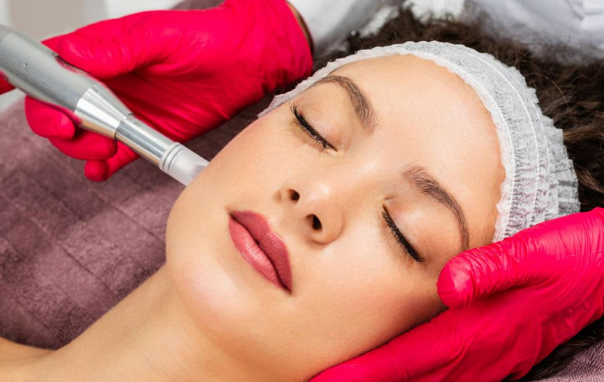
Boosts Collagen Production
A key selling point of microneedling is its capacity to spark a substantial increase in collagen and elastin. Over time, repeated treatments can yield long-term results—particularly in reducing the appearance of wrinkles, fine lines, and dark spots. According to clinical trial data cited by researchers like Kaplan HM, Vogt PM, and Fardella N, microneedling’s controlled skin injury triggers elastin production in ways other treatments sometimes cannot achieve without more invasive intervention.
Cons of Microneedling
Potential Side Effects
Mild risks include redness, swelling, and pinpoint bleeding immediately following a microneedling session. Temporary dryness or flaking may also occur due to the healing time required for the skin. Cold sores could be triggered in predisposed individuals, and risk of infection arises if microneedling devices or the needle cartridge aren’t properly sterilized. Rare granulomatous reactions have been reported, although these instances—documented by researchers like Altintas MA and Innocenzi D—are uncommon.
Recovery Time
Most patients can resume daily activities within 24-48 hours after a microneedling procedure, though complete healing can vary based on individual skin type and needle lengths used. Hot showers, intense workouts, and direct sun exposure should be avoided for the first few days to minimize irritation. Using ice packs or a gentle cleanser can help soothe sensitive skin and alleviate mild discomfort.
Overview of Chemical Peels
Chemical peels involve applying acids—such as glycolic acid or salicylic acid—to exfoliate the outer layer of skin, sometimes penetrating into deeper layers. Customized peels can address specific skin conditions like active acne, dark spots, or uneven skin tone. A peel typically reveals a smoother, more radiant complexion.
Benefits and Applications
Chemical peels are effective treatment methods for diminishing Acne scars, reducing hyperpigmentation, and achieving overall skin tightening through controlled skin injury. A wide range of peel strengths—from light to deep—makes it suitable for different skin types and skin concerns. Light peels with glycolic acid or salicylic acid can help with acne scarring and pores, while medium or deep peels can target more severe scarring treatment or sun damage.
Risks and Side Effects
Common complications include redness, flaking, and possible dark spots or patches if not cared for properly—especially for darker skin tones. Healing can take several days to weeks, depending on peel intensity. Potential health risks such as infection or scarring are uncommon but can occur if aftercare instructions are neglected.
Overview of Laser Therapies
Laser treatments—such as laser resurfacing, laser hair removal, or Fractional microneedling radiofrequency—use concentrated radiofrequency waves or light energy to repair and rejuvenate skin. They can effectively target scarring treatment, hair loss, or a wide range of other skin condition concerns.
Types of Laser Treatments
Common types of laser treatments include ablative lasers that remove the outer layer of skin and non-ablative lasers, which work below the surface. Fractional lasers, for instance, create tiny microthermal treatment zones to encourage dermal remodeling—similar in principle to micro – injuries from microneedling. Another variation is radiofrequency microneedling, merging electrical stimulation from radio frequency with the mechanical action of tiny needles.
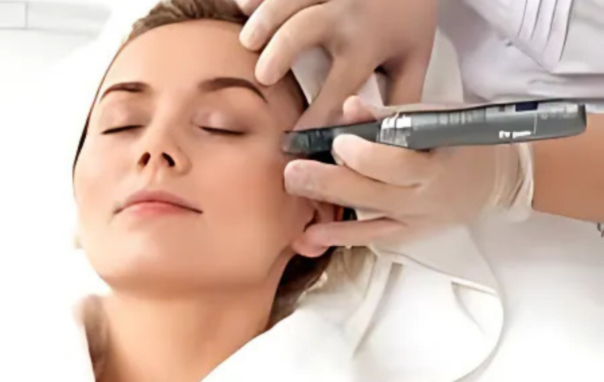
Benefits and Efficacy
Laser therapies can effectively treat acne scarring, fine lines, and uneven skin tone. With advanced technologies such as Radio Frequency or fractional lasers, stimulation for wound healing can be more targeted. Studies by Beverly Hills-based surgeons and aesthetic specialists like Cortijo J, Faus C, and Serrano JM illustrate how lasers can handle surgical scars, linear scars, and hypertrophic scars with precision.
Potential Risks and Recovery
Side effects can include redness, swelling, and flaking. Darker skin types might face a higher chance of pigmentation changes. Recovery varies from minimal downtime to several weeks, depending on the intensity of the treatment sessions. Some patients might need multiple treatments for optimal results, along with special skin care routines (using Bright Skin Lotion or Skin Rejuvenation Vitamin ampules) to protect the skin barrier.
Overview of Injectable Options (e.g., Botox, Fillers)
Benefits vs. Risks
Injectable cosmetic procedure options like Botox and dermal fillers can quickly reduce the appearance of wrinkles or add volume to sagging skin. Fillers containing hyaluronic acid can plump deep layers of the face for immediate youthful appearance. However, injectables are not as effective at improving skin texture or scarring treatment. Potential risks include bruising, swelling, or rare allergic reactions.
Ideal Candidates for Injectables
Individuals primarily concerned with fine lines, volume loss, or mild skin laxity around the cheeks and jawline are typical candidates. If your chief complaint is Acne scars or overall skin elasticity improvement, injectables may need to be paired with an alternative treatment like microneedling or chemical peels for best results. Consultation with a board-certified plastic surgeon or cosmetic surgeon is often recommended for more complex concerns.
Comparison of Safety Profiles
Injectables generally offer quick results and minimal healing time—ideal for those wanting minimal downtime. Microneedling and laser therapy, however, offer more comprehensive improvements in skin tone and texture. Each approach has distinct health risks and benefits, so choosing the right method depends on individual skin condition and goals.
Cost Analysis of Treatments
Microneedling Costs
Costs for microneedling procedures vary based on the device type (microneedling pen, radiofrequency microneedling, or standard rollers), region, and clinician’s expertise. A series of treatments may be required for optimal results in acne scarring, wrinkles, or pore size improvement. While each individual session may be moderately priced, the cumulative cost can add up for multiple appointments.
Costs of Other Skin Treatments
Laser resurfacing, chemical peels, and injectables can sometimes be more expensive per session, particularly for advanced technologies such as Fractional microneedling radiofrequency or laser hair removal. However, they may achieve results faster or target specific skin concerns more intensively. Many clinics bundle combination treatments (e.g., microneedling + peel) at a reduced cost, offering an office treatments package.
Treatment Duration and Recovery
Microneedling Recovery Time
While microneedling is considered a minimally invasive procedure, skin injury does occur. Post-session redness usually lasts 24-48 hours. Avoid sun exposure, hot water, and harsh skin care products for the first few days to reduce the risk of infection and irritation. Use of an ice pack, mild topical agents, and a gentle cleanser can aid the healing process.
Recovery for Other Treatments
- Chemical peels: Recovery ranges from 1-14 days, depending on peel depth.
- Laser treatments: Downtime can be a few days to weeks for deeper laser resurfacing.
- Injectables: Typically minimal downtime; some bruising or swelling may occur.
Consider your tolerance for downtime and your specific skin condition when making a decision.
What to Consider When Choosing a Treatment
Specific Skin Concerns
- Active acne or acne scarring: Microneedling or chemical peels may be beneficial.
- Darker skin tones: Microneedling is often considered safer, though advanced lasers can also be adapted.
- Saggy skin: Radiofrequency (e.g., radiofrequency microneedling) can yield significant skin tightening.
- Double chin or deeper structural concerns: Might require combination treatments or consultation with a plastic surgeon.
Your ideal treatment or series of treatments depends on your skin type, the severity of your condition, and your desired timeline for results.
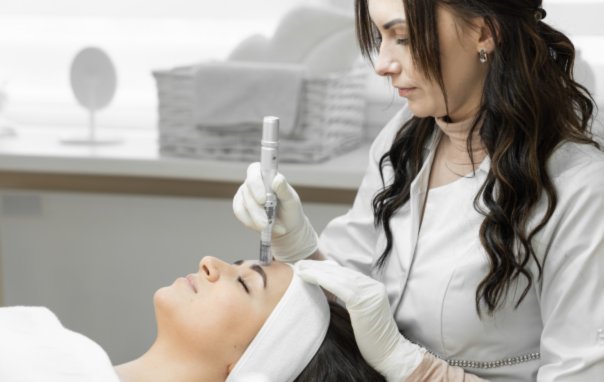
Why Choose Beauty Aesthetics, Toronto, for Microneedling?
Beauty Aesthetics, Toronto offers cutting-edge microneedling devices and treatment sessions designed to transform skin texture, address Enlarged pores, and reduce the appearance of scars. Our trained specialists combine aesthetic medicine knowledge with the latest in medical treatment protocols for safe, effective treatment. From thorough pre-assessments to tailored aftercare, we recognize that each candidate for microneedling has unique skin concerns—such as active acne, hair loss, or dark spots. Whether you desire a simple alternative treatment to surgery or a combination approach with chemical peels, our team ensures a personalized treatment plan. With advanced solutions like radiofrequency microneedling, micro-channels for enhanced absorption of liposomal or platelet-rich serums, and specialized skin care programs, we strive to deliver a complexion that is truly radiant.
Conclusion
Selecting between microneedling and other skin treatments—including chemical peels, laser treatments, or injectable therapies—depends on your skin condition, desired results, and downtime tolerance. Microneedling procedures excel at collagen induction therapy and tackling acne scarring, while laser options and peels may address significant pigmentation or layer of skin concerns more directly. No matter your path, using a trusted provider and following a careful healing process remain essential for the best possible outcome. At Beauty Aesthetics, Toronto, we tailor microneedling and combination treatments to fit your goals, ensuring a smoother, more youthful and firmer skin overall.
